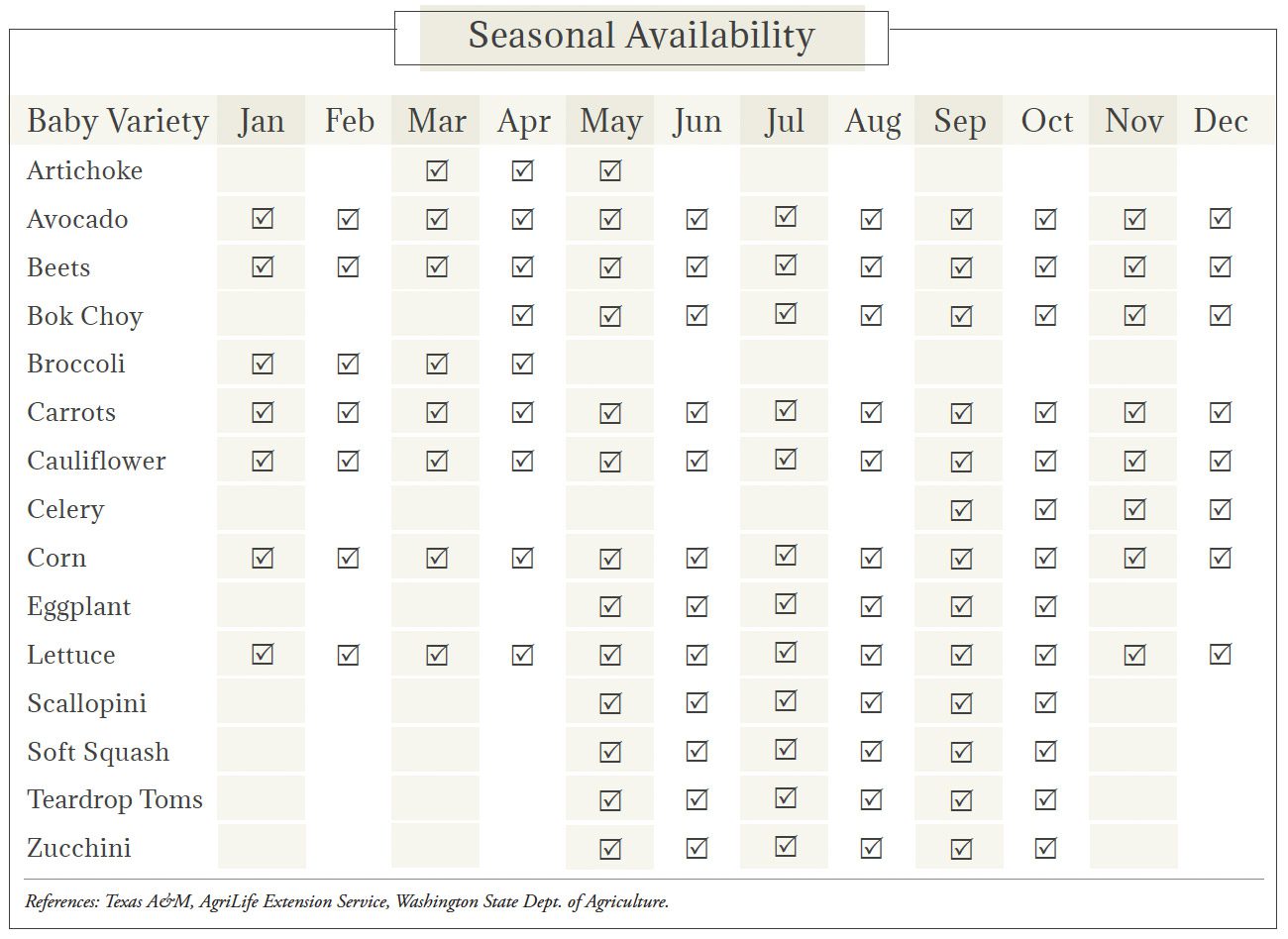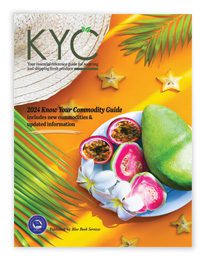Baby Vegetables Market Summary


Image: Africa Studio, mahey, Jilll Richardson, pratikastock, Hong Yo/Shutterstock.com
Baby Vegetable Market Overview
The term “baby vegetable” is, depending on the variety, either accurate or a misnomer. Some baby vegetables are indeed smaller or immaturely harvested versions of mature corn, bok choy, cucumbers, and onions; others are new, distinct varieties bred to be more tender and delicate than their full-size counterparts. Though baby vegetables have come into mainstream over the past decade or so, they originated in England in the late 1800s. They were later used in frozen TV dinners and found in Asian dishes, but didn’t hit popularity until French chefs in the 1960s and ’70s reinvented vegetable sides with the miniatures. Baby vegetables then became haute cuisine, leading growers to devote acreage to the diminutive delicacies. Today, baby vegetables are quite common, although they are not tracked and measured in the same manner of their larger, conventional siblings.
Types & Varieties of Baby Vegetables
Many mainstream and specialty vegetables are available with a ‘baby’ designation, from the well known baby carrots to artichokes, beets, broccoli, corn, lettuce, and zucchini. There are even baby avocados, bok choy, scallopini, and tomatoes. Proponents of baby vegetables believe they are more flavorful, tender, and in many cases, the entire vegetable is edible with little or no waste. Here are some interesting facts about the ever-expanding list of baby vegetables:- Baby artichokes – unlike full-size artichokes, they have no choke, and minus the outside leaves, the entire vegetable can be eaten
- Baby avocados – also called ‘cocktail avocados,’ typically about 3 inches long and 1 inch in diameter
- Baby beets – available in three varieties (gold, red, and long red), ranging in size from a quarter to a half-dollar, with greens extending several inches; the golds are considered sweeter and the reds heartier in flavor
- Baby bok choy – a smaller, dwarf variety of Asian cabbage, considered sweeter and more tender
- Baby broccoli – also called Brassica oleracea, it is thin and tender, resembling broccoli rabe in shape with a milder, subtler flavor than full-grown broccoli
- Baby carrots – from 1 to 4 inches long, with a sweeter taste; comes in three typical varieties: French, round, and white
- Baby cauliflower – about 2 inches in diameter, available in baby or snowball varieties with flavor and texture similar to the mature plant.
- Baby celery – unlike other babies with a milder taste, this miniature is about 7 inches long and has a stronger flavor than full-grown celery
- Baby corn – available in white and yellow varieties, often pickled or served in stir-fry; has a crunchy corn flavor
- Baby eggplant – comes in purple and white varieties, with long or round shapes; can be bitter
- Baby green onion – prematurely harvested with a chive-like flavor
- Baby lettuce – many varieties, including red and green leaf, iceberg, romaine, as well as mesclun mixes with baby arugula, chard, spinach, endive, and mustard greens
- Baby scallopini – one of three baby squashes (constricted neck, zucchini, and winter), this green, top-shaped squash has a soft inside and a grassy, peppery flavor
- Baby soft squash – varieties include baby patty pan, Sunburst, Table Queen green and gold, and crook; has a soft outer shell and can be sold with or without flowers
- Baby teardrop tomatoes – available in red and yellow varieties; red is particularly sweet
- Baby zucchini – a soft inside and underdeveloped seed cavity gives this finger-sized squash a light, delicate flavor and texture.
The Cultivation of Baby Vegetables
Harvesting at the right time is important as the miniatures can grow past the ‘baby’ stage quickly. For example, harvest baby corn within a couple days of the appearance of silk, and any squash varieties within 24 hours of flowering. Proper handling is important to preserve quality and can include washing off soil, cooling quickly from field heat, and proper refrigeration. Baby vegetables can be grown in fields, greenhouses, or high tunnels. In the field, adequate drainage and planting after frost risk is recommended.


